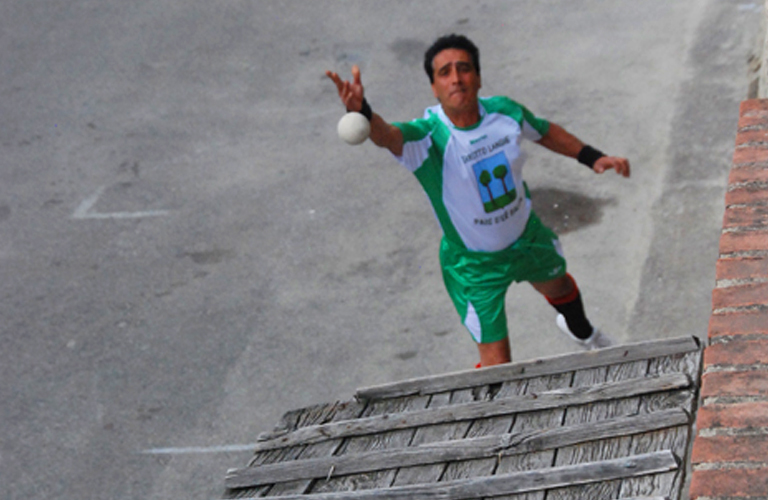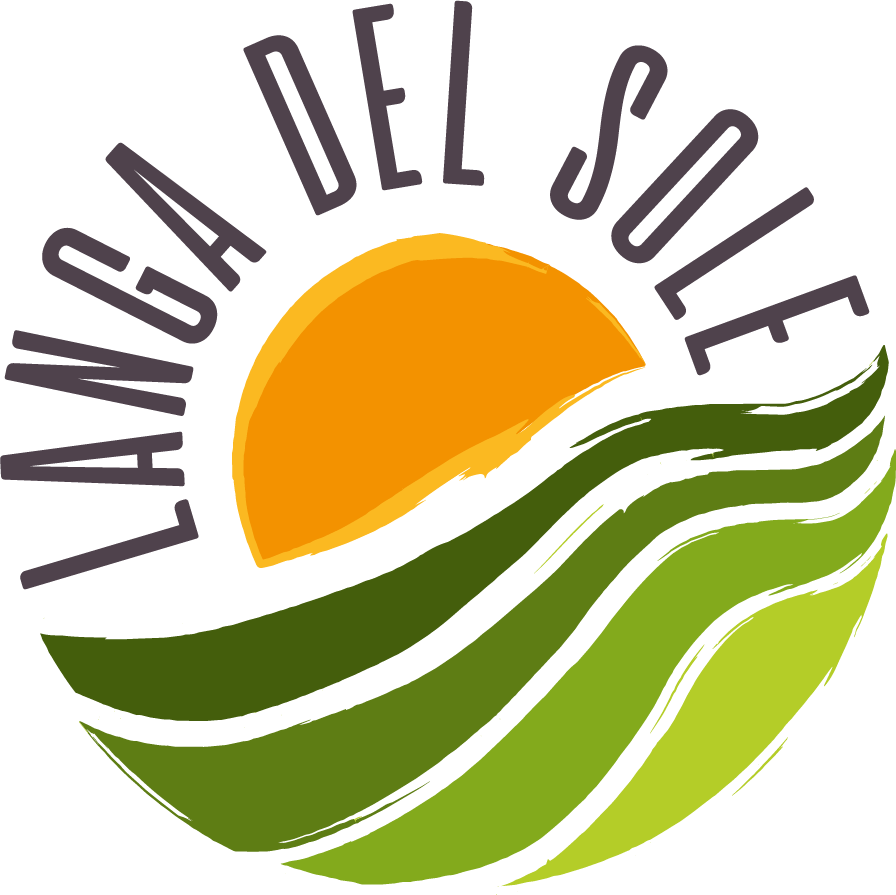Balon («pallapugno» or «pallone elastico») is the “national” sport of the Langa del Sole, if by “sport” we refer to that inextricable intertwining between professional competition, social relations and traditions that revolve around a game.
The label of “sport” must be strictly attributed to Balon, which is actually more of a “game”, a definition that shifts the attention of the audience and participants from the sport, which is certainly important, to the surrounding atmosphere and social aspect. So Balon – which is played in the Langhe as Pantalera – takes on additional meanings and includes bets, superstition and people met during the matches. Above all, it becomes tinted with myths of champions and athletic feats that turn into legends handed down through the generations, and that are talked about when in company, during the waking hours spent around the fire before going to sleep. Balon represents a “ playing time” in the rural and agricultural societies of the Langhe, a ritual period of pause that brings together the rich and the poor, the old and the young, believers and atheists on the same field, each cheering for his team. Even the field used in Balon, especially the one for Pantalera, is not a neutral ground: it is highly characteristic, and usually see the town squares turn into public arenas, just for the occasion. Here, the athletes are not the only ones who lead the game, but the whole community joins as well – to the point that sometimes there are no stands and the people stay on the edge of the field, with the risk of being hit. But it is guaranteed to be quite a show. While the ball bounces more and more unpredictably on the rough ground (there are no “standard” fields for Pantalera and all rebounds from the side walls of the square can be played) the audience goes on commenting, bargaining and, most of all, betting. And the bets can get really high, because winning or losing is not a matter of sport, but a personal one, not made as a fan, but as a participant.
CONTEMPORARY PALLAPUGNO
Today’s Pallapugno is very different from the Balon played as “Pantalera”. There are standard rules and, since 1982, championships have been held upon authorization of FIPAP, the Federazione Italiana Pallapugno (Italian Pallapugno Federation) officially recognized by CONI (Italian National Olympic Committee). Betting practices are also almost entirely gone and, in various towns, matches are held in designated courts (sferisterio). Even the Pantalera has been equipped with regulations and it is rare to see it played in the squares. In Alba, for example, the Pantalera Storica has become a tourist attraction, a match played in the main square and is part of the events organized during the International Alba White Truffle Fair.
PANTALERA, THE RULES
From www.virtuslanghe.it
The game is played with two teams of four players each, called quadretta: consisting in a battitore, a spalla and two terzini. Instead of playing in a sferisterio, the game is held in the square or in a spacious courtyard, possibly a rectangular one. And scoring is similar to tennis: fifteen, thirty, forty, and game. The match consists of 11 games: the battitore throws the ball on a specially inclined support with slanted slates (called “PANTALERA”) which make the ball bounce irregularly (originally, the ball used to be thrown on the roofs).
The receiving team can hit the ball in flight or after one rebound (just like in tennis), with their fist (protected by bandages, leather or rubber bands) or, in close-range shots, with an open hand, sometimes protected by a glove. In any case, only one hand can be used at a time. All other contacts of the ball with other parts of the body, except for the forearm, are to be considered as fouls.
The goal is to send the ball as close as possible to the opponent’s baseline or, even better, beyond it. In this latter case, it is called a “fuori campo” (or, in Piedmont dialect, an “intra” and, in Ligurian dialect, a “ciellu”), a sort of “homerun”, the most spectacular shot, which directly scores a fifteen. However, if the player sends the ball directly over the support wall or beyond the lateral lines, it will be counted as a foul and the opposing team scores a fifteen.
If there are no fouls or homeruns, the game goes on until one of the two teams, unable to hit the ball in flight or after a first rebound, stops it or sends it forward using any part of the body after it has bounced on the ground more than once: in these cases, the ball cannot be played anymore and it can be stopped either with the hands or the feet. The referee signals a caccia, putting the ball on the ground, where the ball has been stopped and marks the spot with a flag. A caccia can also be called when the ball, after bouncing at least once on the field, goes out on the sides: in this case, the ball will be placed in the point where it exited the field. After calling caccia for a maximum of four times, the teams will exchange courts. At this point, the second part of the game begins and the two teams compete for all the caccia that have been called by the referee.
In order to score a caccia, the quadretta must stop the ball using valid moves, all while keeping the spot where the caccia is located, marked by a flag, behind them. Points can be scored when a regular ball goes beyond the opponent’s baseline, when a caccia is scored or when the opponent commits a foul: each of these moves gets a fifteen.
Matches can last from a little over an hour to several hours, especially when the teams playing are equal matches.

Compared to contemporary pallapugno, Pantalera favours skill and intuition over muscular power: the differences between one type of field and another are intensified since architectural elements present (gutters, doors, steps, windows, roofs) and the unevenness of the terrain often make it quite hard to predict the rebound of the ball, which can always be played until the first rebound after touching any type of surface.

Post a cura della Redazione di Langa del Sole

